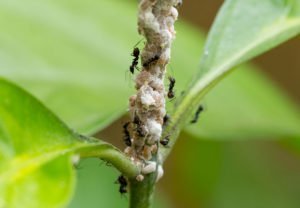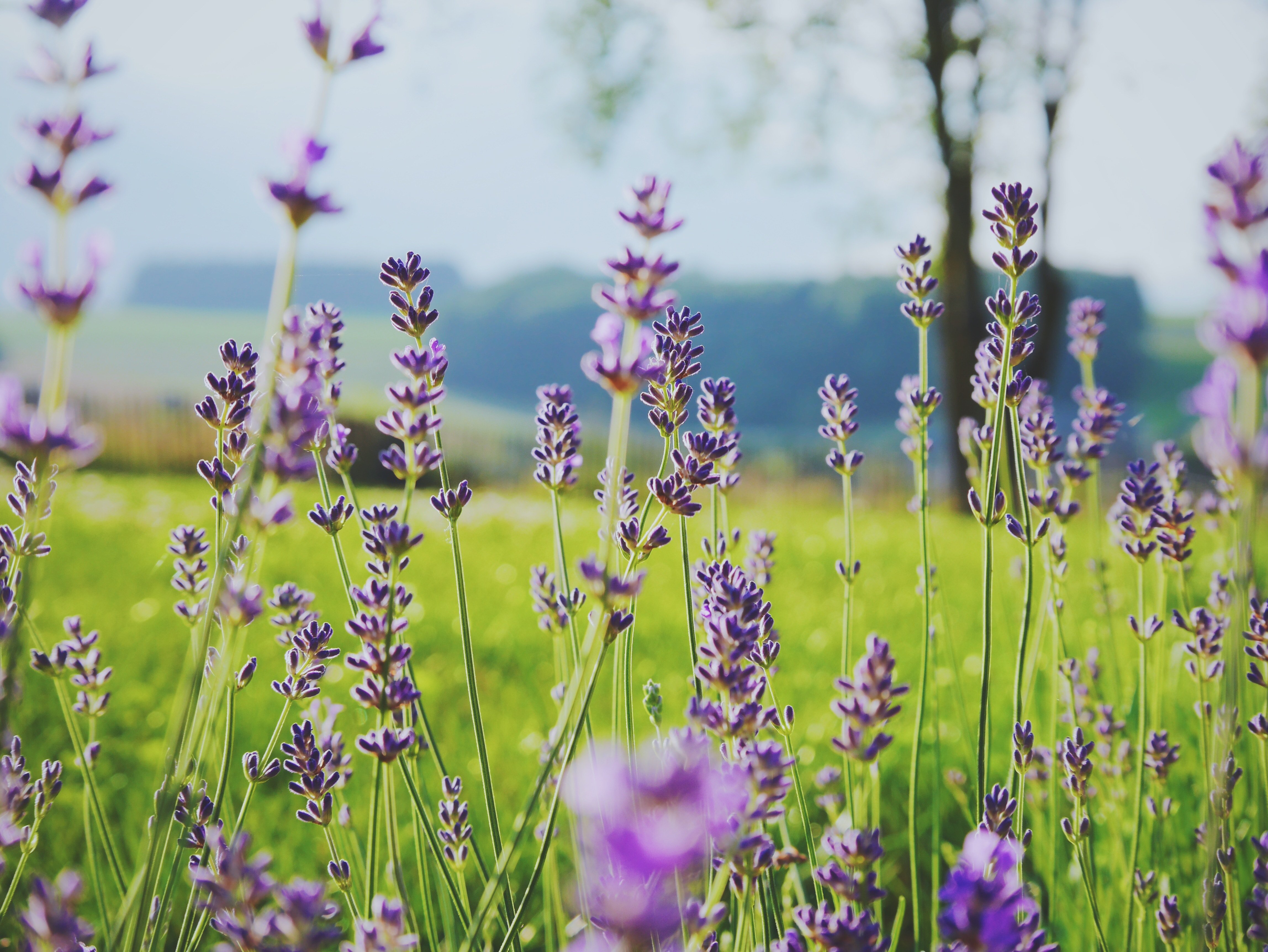As with any plant, improper care can also damage the orchid. Maybe you water them too often or the location is not optimal and attracts plant pests. So that this does not happen in your home, we want to give you the right solution or preventive care in addition to the five most common orchid diseases. After all, your orchids should be fit and healthy so that they can shine with their blooms.
First problem: Infestation with mealybugs and mealybugs
Themeal lice are also often called mealybugs and are one of the annoying little creatures that can infest your plant. With their sucking activity, they damage the leaves, stems and roots of the orchid. But that's not the only thing that harms the plant. The little animals also excrete toxins through their saliva. This inhibits the growth process of the still healthy plant.
Mealy lice damage

Mealybugs usually infest the leaf axils of the orchids, but they can also occur on the roots. You can recognize the infestation by mealybugs by the small white webs. This waxy substance serves as protection for the little creatures. In addition, mealybugs, like aphids, secrete honeydew as a waste product. When the leaves of your plant are infected, they usually turn yellow and curl up until they fall off.
What to do when infested with mealybugs?
In the best case, you always fight mealybugs with natural means and avoid chemical substances. This works best if the orchid disease has not progressed that far. You should always immediately separate your plant from the other plants because of the risk of contamination. If the flowers are affected, then you will have to cut them off. You can use an oil and dish soap solution for the leaves (mix one liter of water with two tablespoons of olive oil and a dash of dish soap). Spray the leaves with it, then wipe the mealybugs off. You should repeat this process daily until the animals are gone. You should also repot the orchid and see if the roots are also affected.
Care for your orchid
You often drag the mealybugs home with you when you buy an orchid plant. Therefore, always pay attention to the quality and avoid cheap products. The orchid soil should also be checked carefully, because the small animals can also slumber here if the quality is poor. And so they come to your apartment for nothing.
Second problem: aphid infestation
The aphids are among the most common animals that damage plants and thus cause diseases in orchids. After taking a break in winter, they appear more frequently in spring. Within a short time they multiply so rapidly that they do not stop at many plants, including orchids, with their tiny wings. With their small proboscis they attack the plant cells of the young leaves and suck out the nutritious and sugary plant sap and extremely weaken the plant.
Aphids harmful
The aphids eat small holes in the leaves with their teeth. You can also recognize the infestation by the slightly black or green coloring of the insects. In the worst case, the leaves even fall off. In addition, the aphids form the so-called honeydew, which stretches over the leaves. The little animals can only use part of the plant sap. Most of them are eliminated again.This sticky coating on the plant is a reliable indicator of aphid infestation
What to do when infested with aphids?
In the case of aphids, it is usually sufficient to carefully remove them with a jet of water. Then quarantine them so the aphids don't spread to other plants. Check the orchid for lice in the coming days. When no more new animals appear, you can put them back in their usual place.
Care for your orchid
Although many orchids are affected by aphids, there are a few tricks you can use to prevent aphid infestations. For example, you can place a lavender plant or savory next to your orchid. The aphids do not like the essential oils of these plants at all. Also, pay close attention to the instructions for use when using synthetic fertilizer. Incorrect fertilization often leads to incorrect nutrient levels.

Third problem: Spider mite infestation
Spider mites become a problem for plants and orchids, especially in winter, as they feel very comfortable in the dry heating air. It usually doesn't take long before the 0.5 cm large spider mite has made itself comfortable on your orchid.
Spider mite damage
The spider mites often form small webs on the underside of the orchid leaves. You cannot see the mites themselves with the naked eye, so the fine nets are an indication of the infestation. The spider mites pierce their host plant with their suction organ and thus suck the plant sap out of the cells. This leads to dehydration and light green to creamy white discoloration on the leaves. If the plant is badly damaged, it can dry out completely.
Tip: If you spray your plant with an atomizer, you can see fine white cobwebs very well. A clear indication of the infestation by spider mites.
What to do when infested with spider mites?
First you should carefully wipe the leaves with water. Since the spider mites don't like too much humidity, you can increase the humidity during the infestation. Spray the plant with water and then cover it with a clear bag for about three days. After that, you should keep watching the orchid.
Care for your orchid
In order to prevent this problem among orchid diseases, there are a few tricks that you should keep in mind when caring for them. For example, avoid dry heating air in the premises. Also, spray the plant regularly with water so that it doesn't dry out completely.

Fourth problem: fungus
Not only lice or mites can cause diseases in orchids. No, fungi can also attack the plant and cause significant damage.
fungal damage
You can recognize the fungal infestation very well by the brown to black spots that spread on the leaves and stems. They are a little lower and therefore form a small hollow. If you don't treat your orchid right away, the fungus can spread rapidly and go even deeper. Fungal infestation often occurs due to incorrect care.
What to do when infested with spider mites?
You should immediately remove the affected leaves and stems. Always use a sharp and disinfected knife for this. You can also spread a cinnamon-water mixture on the leaves. The mushroom doesn't like that either.If the humidity at the location is too high, then you should put your orchid in another place so that this problem does not appear again under the orchid diseases
Care for your orchid
Make sure that the humidity in the room is not too high. Make sure you don't spray your orchid with water too often. It is also important to keep observing your plant during the dormant phase in order to detect fungal infestation at an early stage.
Fifth problem: Wrong location
Not only lice, mites and fungi can damage your orchid. No small animals have to infest the plant to cause diseases in orchids. Even a small mistake in care leads to negative changes in your orchid. Unfortunately, choosing the wrong location can have serious consequences.
Malicious image at the wrong location
One of the most common orchid diseases is orchid sunburn. Even with plants, the top protective layer can be vulnerable. When exposed to direct sunlight, the orchid often develops brown spots or even clumps on the top of its leaves and stems.
Solution and precaution in the wrong location
The solution here is very simple and self-explanatory. If your orchid is exposed to too much sunlight, move it to a different spot where it doesn't get too much sunlight.

Proper care for orchids
You have now learned about the five most common problems with orchids. If you have any questions about orchids, please read our other articles about this special plant: Correct orchid location, Repotting orchids , Watering orchids, Cutting orchids, Orchid care. Here you will find more tips and tricks on what you need to consider when keeping this special plant. If you would like to have other suitable houseplants in your home, then please have a look at our page. We still have a lot to offer here!
.


















Leave a comment